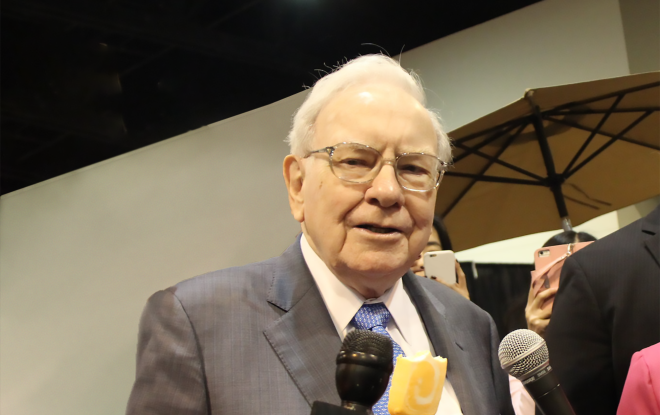The Most-Anticipated Reverse Stock Split of the Year Has Arrived — and This Company Is a Screaming Bargain
Since 2024 began, hype surrounding the artificial intelligence (AI) revolution has played a major role in lifting Wall Street’s three major stock indexes to multiple record-closing highs. But AI isn’t the only trend pushing the broader market higher. The euphoria surrounding stock splits has played an equally important role.
A stock split allows publicly traded companies to adjust their share price and outstanding share count by the same factor, without altering their market cap or underlying operating performance. It’s a purely cosmetic maneuver that can have important consequences.
There are two varieties of stock splits, with investors decisively favoring one over the other. A reverse-stock split is geared at increasing a company’s nominal share price, usually with the goal of ensuring it meets minimum continued listing standards for a major stock exchange. Conversely, a forward-stock split is designed to reduce a company’s share price to make it more nominally affordable for everyday investors who can’t purchase fractional shares through their broker.
Generally speaking, reverse splits are conducted by struggling businesses whose share price is floundering. Comparatively, companies completing forward splits are typically out-innovating and out-executing their peers. Unsurprisingly, most investors tend to focus on high-flying companies enacting forward splits.
Since late January, 13 prominent businesses have announced or completed a stock split — 12 of which are of the forward-split variety — including AI darlings Nvidia, Broadcom, and Super Micro Computer.
But it’s the lone high-profile reverse-stock split that deserves the attention of Wall Street and investors today.
The most-awaited reverse-stock split of 2024 is now complete
In mid-December, Sirius XM Holdings (NASDAQ: SIRI) and Liberty Media’s Sirius XM tracking stock, Liberty Sirius XM Group (NASDAQ: LSXMA)(NASDAQ: LSXMB)(NASDAQ: LSXMK), announced their intention to merge into a single class of shares. Liberty Media is the majority stakeholder in Sirius XM, and the variance in the price between Liberty Sirius XM Group’s three classes of shares and the share price for Sirius XM stock has been head-scratching at times.
Last week, the final exchange ratio for this merger was announced, with Liberty Sirius XM Group stakeholders redeeming their shares “in exchange for 0.8375 of a share of common stock of New Sirius.” Liberty Sirius XM Group stopped trading after the close of business yesterday, Sept. 9, which means today, Sept. 10, marks the first day of a single, non-confusing, class of Sirius XM shares.
But there’s more to this combination than just getting the exchange ratio correct and ending the confusion of multiple shares classes.
In mid-June, Sirius XM announced that, upon consummation of the merger with Liberty Sirius XM Group, a 1-for-10 reverse-stock split would be conducted. This reverse split, which is now complete, has reduced the company’s outstanding share count from well over 3 billion to an estimated 339.1 million shares.
What makes this reverse-stock split so unique is that it’s not being executed out of weakness. In other words, Sirius XM was in no danger of delisting from the Nasdaq stock exchange.
Instead, it was enacted to increase its share price from the $3 to $6 range that it’s hovered around for years to one that’s more likely to attract institutional investors. Some money managers will avoid stocks priced below $5 for fear of increased volatility. Sirius XM’s 1-for-10 reverse split eliminates this minor concern and should put the company back on the radar of top-tier money managers.
Sirius XM is a screaming bargain for opportunistic long-term investors
In addition to being Wall Street’s only high-profile reverse-stock split of 2024, Sirius XM Holdings is, arguably, the top bargain among the 13 companies to have announced or completed a split this year.
Though I’ll get to the figures that qualify Sirius XM as a “screaming bargain” in a moment, let me walk you through a few of the competitive advantages that make it a stock you can safely own for years to come.
To begin with, it’s the only licensed satellite-radio operator. While this doesn’t mean it’s devoid of competition, it does convey that Sirius XM is a legal monopoly. As such, it affords the company exceptional pricing power with its monthly and annual subscriptions.
Another advantage to Sirius XM’s operating model is its cost structure. While some of its expenses, such as royalties and talent acquisition, are going to fluctuate from quarter to quarter, transmission and equipment expenses typically don’t change, regardless of how many subscribers the company has. If Sirius XM can expand its subscriber base, it should have a clear path to improve its operating margin over time, largely thanks to some of its costs being highly transparent and predictable.
A third competitive edge Sirius XM holds over traditional radio operators is the path by which revenue is generated. Online and terrestrial radio providers are overwhelmingly reliant on advertising to pay the bills. While this strategy works well during lengthy periods of economic expansion, it can lead to some big question marks when recessions inevitably occur.
Sirius XM has brought in less than 20% of its sales through the first six months from advertising. Comparatively, almost 77% of its revenue can be traced to subscriptions. There’s a considerably lower likelihood of satellite-radio subscribers cancelling their service during a recession than there is of businesses cutting their ad spending. This tends to lead to more predictable cash flow for Sirius XM in any economic climate.
With these competitive advantages in mind, let me now address how historically cheap Sirius XM’s stock is. Based on where shares closed on Sept. 6, Sirius XM can be scooped up by opportunistic long-term investors for 8.3 times forward-year earnings. This represents a 53% discount to its average forward price-to-earnings (P/E) multiple over the trailing-five-year period, and is a stone’s throw away from its lowest forward P/E multiples since going public in September 1994.
Sirius XM is historically cheap relative to its cash flow generation, too. Its multiple of 5.6 times forecast operating cash flow in the current year (2024) equates to a 43% discount to its average price-to-cash-flow multiple over the last five years.
Tack on a sustainable 3.9% yield for good measure, and you have a screaming bargain that also happens to be Wall Street’s most-anticipated reverse-stock split of 2024.
Should you invest $1,000 in Sirius XM right now?
Before you buy stock in Sirius XM, consider this:
The Motley Fool Stock Advisor analyst team just identified what they believe are the 10 best stocks for investors to buy now… and Sirius XM wasn’t one of them. The 10 stocks that made the cut could produce monster returns in the coming years.
Consider when Nvidia made this list on April 15, 2005… if you invested $1,000 at the time of our recommendation, you’d have $630,099!*
Stock Advisor provides investors with an easy-to-follow blueprint for success, including guidance on building a portfolio, regular updates from analysts, and two new stock picks each month. The Stock Advisor service has more than quadrupled the return of S&P 500 since 2002*.
*Stock Advisor returns as of September 9, 2024
Sean Williams has positions in Sirius XM. The Motley Fool has positions in and recommends Nvidia. The Motley Fool recommends Broadcom and Nasdaq. The Motley Fool has a disclosure policy.
The Most-Anticipated Reverse Stock Split of the Year Has Arrived — and This Company Is a Screaming Bargain was originally published by The Motley Fool





Leave a Reply